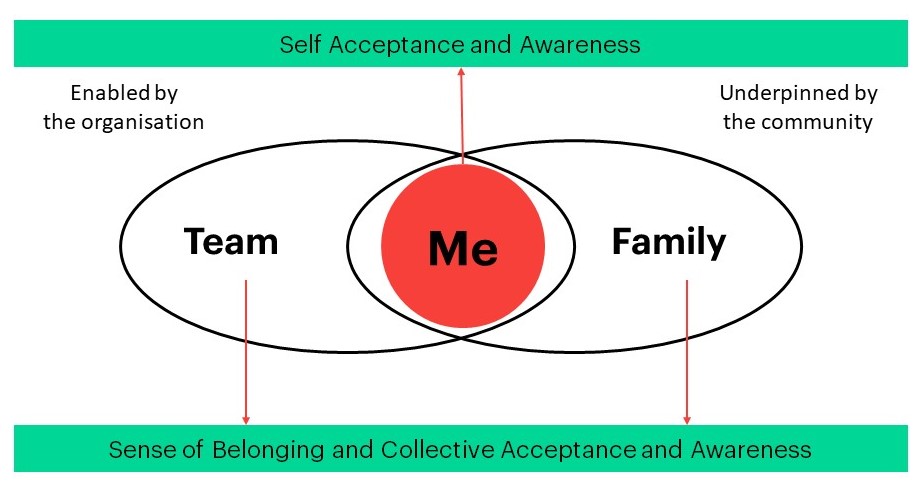Change management: A matter of life and death?
Creating a safety conscious culture requires an individual commitment to safety. A change culture that can be challenging Change Management Facilitating this change can be challenging as it requires a change in culture which can extend even outside of the work environment.

It may seem far-fetched to suggest that the effective management of the people side of business change can be a life or death matter. However, my recent experience working with a client in the mining industry helped me to realise how important it is to ensure that we do not lose our focus on people.
In a world increasingly focussed on safety (post the BP Deepwater Horizon disaster), affecting a change which results in safety becoming a priority, as opposed to safety being a measure of success, should be easy. But as you will see, affecting this change in reality required nothing short of fundamental shift in the attitude of every single person in the organisation, as well as their immediate families.
Background
Our client is a key supplier to the mining industry, operating in a challenging environment, characterised by:
- A contracting economy
- A changing socio-political context
- Difficult working conditions
Unfortunately, the pressure to increase production, can sometimes contribute to unsafe practices. Beyond the critical personal impact of safety incidents, the cost of safety incidents has a significant impact on the bottom line. With this in mind, we were engaged to help our client to significantly reduce the number of safety incidents.
Responding to the challenge
Human beings, like all other creatures, have a natural instinct to preserve their safety. Being safe typically starts with accepting responsibility for your own safety, and then making a personal choice. Once taken, the personal decision to adopt a safe lifestyle initiates a journey of self-acceptance and self-awareness, where each person realises that, “I am accountable for my own safety.” This internal level of awareness generally leads to an acceptance that, “I am part of a system, at both work and at home, and that I influence (as do those around me), the safety of the people that I interact with, whether they are my colleagues or my family.”

Organisational culture is strongly influenced by the power of individual choice, which has an important role to play in establishing acceptable, and unacceptable, norms and patterns of behaviour. Therefore, when one views safety at work from this perspective, a company’s safety record becomes the simple sum of all of the individual choices made by their employees. Typically, organisations approach the challenge of safety by imposing (and policing) safety policies and procedures. There is certainly a place for this, but ultimately, creating a safety conscious culture requires an individual commitment to safety. Affecting change in our clients’ environment would require considering the choices employees make all day, both at work and at home.
An innovative approach to facilitating change
Each person has a role to play, and once they have taken a decision to behave safely at all times, this influences the people around them. This leads to a collective sense of awareness and acceptance of the role that each individual has in creating a safe environment, and fostering a culture where safety is a collective cornerstone.
With this in mind, we set about establishing a foundational principle:
Safety is neither a negotiating tool for employees to use with management, nor a punitive measure for management to use with the workforce
This principle established the foundation for a balanced approach, where each person understood that safety is their own responsibility while the company has a collective duty of care for those that work for it. If safety starts and ends with me, it is ultimately MY responsibility. And this responsibility actually starts at home, before I arrive at work – it’s actually a 24/7/365 task.
The ultimate safety partnership exists at home within the family unit. Therefore, to affect change, we needed to involve the heads of each family unit in establishing the acceptable behaviours that lead to a safe home life. These rules, choices and socially acceptable norms would ultimately lay the foundation for behaviour change at work. Therefore, the audience for the change programme was extended to include the families of each employee.
How we leveraged theoretical insights in the development of the programme
A system’s perspective of change (illustrated above) reflects that the individuals’ choice of safety as paramount in the creation of a sustainable safety system. However, the home environment, the community, the organisation and its collective leadership are equally important. It is generally acknowledged that leadership is the single biggest driver of sustainable safety systems, and leaders have a key role to play in defining and managing the culture in the environments they oversee.

Communities and companies need to ensure that the drive for safety goes well beyond a fear of failure or statistical success but is rather guided by a genuine concern for people. Through consistent and transparent behaviour, leaders need to lead and underpin the organisation’s efforts to make safety a lifestyle decision where specific behaviours become widely accepted as being acceptable or unacceptable to the whole group. The diagram below graphically represents the interrelationship of these concepts:
What did we learn
Using peer-to-peer involvement and positive reinforcement aimed at increasing the number of safe behaviours, you can influence the adoption of safe behaviours and improve both productivity and work quality. Optimising human performance requires a proactive system that generates high levels of employee engagement and emotional buy in.
Some of the key insights we gained included:
- Attitudes drive behaviour and safety performance
- Where management show active, genuine and continuous support this encourages employees to be involved, resulting in lower injury rates
- Job satisfaction positively reduces injury rates
- A positive, trusting and co-operative relationship between workers and management improves results
- Safety is an output not an input
This intervention has reinforced our understanding that change of this scale and nature takes time and ongoing effort. It is clear from follow-up discussions with our client that the desire to create a fresh discussion and new memories has helped with daily operational discussions where the consideration of getting home safely to your loved ones has become part of the daily conversation.
Would you like to read more about change in the mining industries? Read our partner Isaac Kruger’s experience